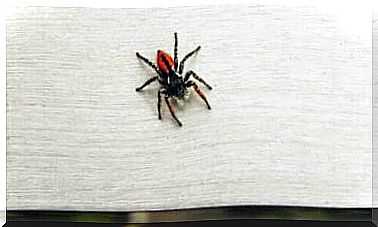Ortalis Ruficauda, a Bird From The Tropics
The Ortalis ruficauda is a tropical bird of the order Galliformes. This species is part of an ancient group of birds in the family of cracids, which includes about fifty species and is related to megapodiids. The latter are known as the mound-building birds that inhabit Australasia.
Distribution of Ortalis ruficauda
The Ortalis ruficauda lives only in America. It is endemic to neotropical areas: northeastern Colombia and northern Venezuela, although it also lives in Trindade and Tobago, where it is one of the two national birds.
Habitat
The Ortalis ruficauda lives in deciduous shrubs, gallery forests and forest areas in the drier plains of northeastern Colombia, northern Venezuela and Trinidad and Tobago, as we mentioned earlier.
In Venezuela, Ortalis ruficauda does not generally inhabit the depths of humid forests, preferring shrubs, stream banks or lowland forests found in the drier parts of the tropics.
Physical characteristics
These birds are similar in appearance and size to chickens and pheasants. They have a small head, a long neck, a body with large, strong legs and a relatively long tail. In addition, they feature a deep, resonant singing.
This species has an opaque and discrete plumage. The predominant colors are grey, brown and black, which serve as camouflage on branches and on the ground. Females of this species are also dark brown in color with a light brown body portion.
Habits of Ortalis ruficauda
The Ortalis ruficauda is mainly a diurnal bird. It is most active in the first hours before dawn, when you can hear its noisy calls.
These birds prefer to make their nests in trees. They feed mainly on fruits and plants, as well as soft fruits, seeds, flowers, green shoots and leaves. Due to its frugivorous habits, this bird is a good seed disperser and, therefore, is important for forest regeneration.
Recent studies have placed Ortalis ruficauda as an indicator species of the conservation status of forests. In addition, this bird is a social species that usually gathers for food in flocks of 4-20 birds.
The Ortalis ruficauda usually rests during the hottest hours of the day. Of course, their resting places are always among the trees. In addition, they also take dust baths and this is believed to help them deal with external parasites. However, this attitude can also be part of the courtship ceremony.
reproduction
It is worth noting that these birds are monogamous. In addition, they often nest in trees and both male and female contribute to the construction of the site. During the breeding season, they can become territorial.
In general, these birds lay two white eggs that the female incubates on her own. The chicks are precocious and are born with the instinct to immediately climb and take refuge in the nest tree. Furthermore, they are able to fly a few days after hatching.
The song of Ortalis ruficauda
Many specimens of Ortalis ruficauda emit extremely loud sounds. They have a greatly enlarged trachea that ensures their calls can be heard from over 1 km away.
Generally, flocks of Ortalis ruficauda emit very loud sounds in chorus. In his corner, there is an infinity of screams, cackling and croaking.
Conservation status of Ortalis ruficauda
Traditionally, the cracid family is hunted in rural villages in the Neotropics, due to their larger size compared to other forest birds. On the other hand, the increasing deforestation of their habitat also contributes to the accelerated decline of local cracid populations across Latin America.
One factor that may favor actions for the conservation of this species is that it is becoming an important species for the ecotourism industry.








